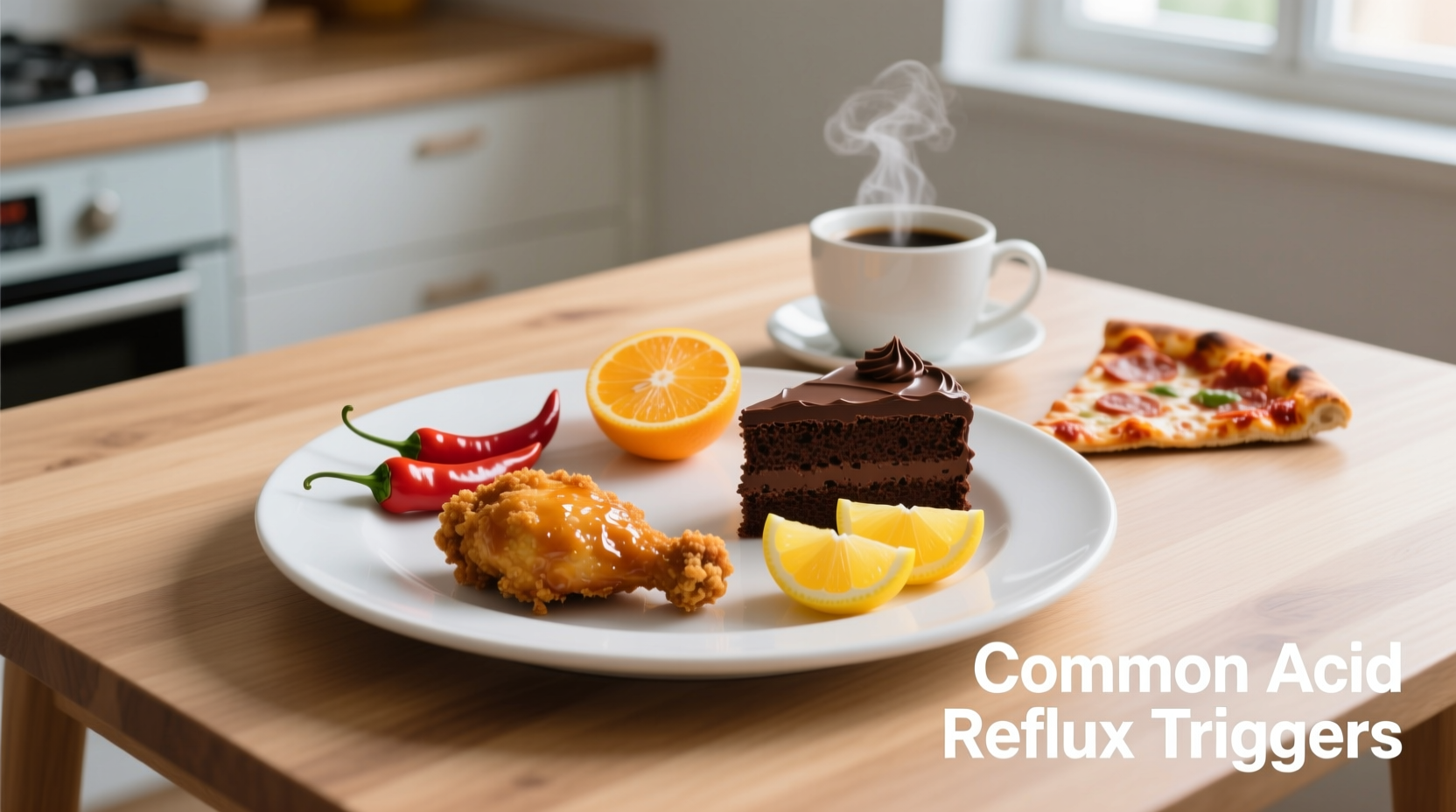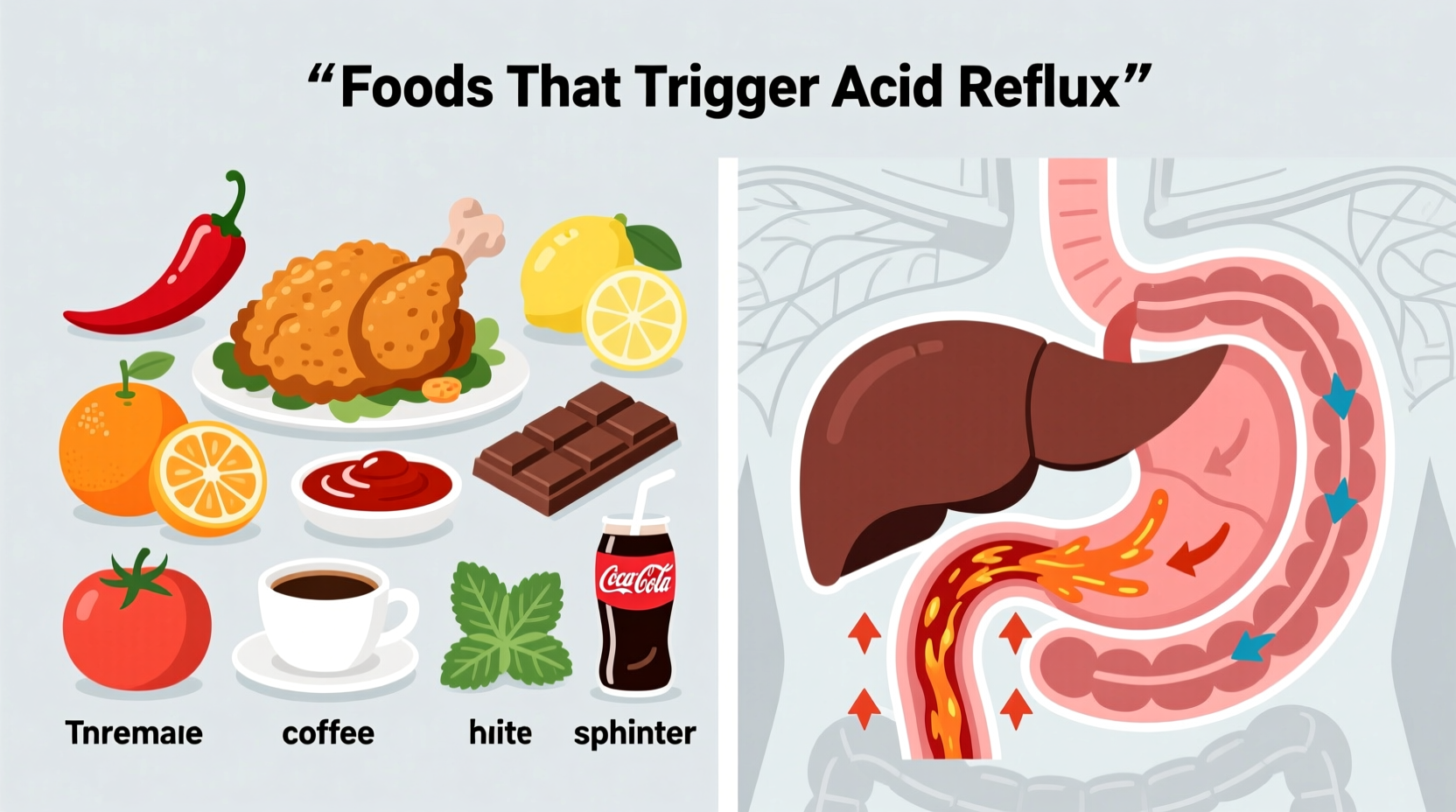Understanding which foods trigger your acid reflux is the first step toward managing uncomfortable symptoms. Acid reflux occurs when stomach acid flows back into your esophagus, causing that familiar burning sensation known as heartburn. While occasional reflux is normal, frequent episodes can indicate gastroesophageal reflux disease (GERD), affecting approximately 20% of Americans according to the American College of Gastroenterology.
The Science Behind Food-Triggered Acid Reflux
When you eat, your lower esophageal sphincter (LES) normally opens to allow food into the stomach, then closes tightly. Certain foods weaken this muscle or stimulate excess acid production, allowing stomach contents to flow backward. The National Institute of Diabetes and Digestive and Kidney Diseases (NIDDK) explains that fatty foods delay stomach emptying, increasing pressure that can force acid upward. Meanwhile, acidic foods like citrus and tomatoes directly irritate the esophageal lining already compromised by reflux.

Top Acid Reflux Trigger Foods: Evidence-Based Analysis
Based on clinical studies from Harvard Medical School and the American Gastroenterological Association, these foods consistently rank as the most problematic for reflux sufferers:
| Trigger Food | Why It Causes Problems | Research Evidence |
|---|---|---|
| High-fat foods (fried items, fatty meats) | Delays stomach emptying, increases abdominal pressure | NIDDK study shows 40% higher reflux episodes after high-fat meals |
| Chocolate | Contains methylxanthine that relaxes LES | American Journal of Gastroenterology found chocolate increases reflux by 300% compared to placebo |
| Citrus fruits and juices | High acidity directly irritates esophagus | Mayo Clinic research confirms citrus triggers symptoms in 72% of GERD patients |
| Caffeine (coffee, tea, energy drinks) | Relaxes LES and stimulates acid production | American Journal of Clinical Nutrition links caffeine consumption to 50% higher reflux risk |
| Alcohol | Relaxes LES and irritates stomach lining | NIH study shows wine increases reflux episodes by 200% compared to water |
Your Personal Acid Reflux Trigger Identification System
Not everyone reacts to the same trigger foods. The American College of Gastroenterology recommends a structured elimination approach:
- Keep a detailed food diary for two weeks, noting everything you eat and any symptoms
- Eliminate common triggers for 2-3 weeks (start with top 5 from the table above)
- Reintroduce one food at a time every 3-4 days, monitoring symptoms carefully
- Identify your personal triggers based on symptom patterns
This method helps distinguish between universal triggers and your individual sensitivities. Remember that portion size matters—small amounts of certain triggers may be tolerable while larger portions cause problems.
Smart Substitutions for Common Trigger Foods
You don't have to give up flavor to manage reflux. Try these evidence-based alternatives:
- Instead of coffee: Try chicory root coffee or roasted dandelion root tea (naturally caffeine-free)
- Instead of tomato sauce: Use roasted red pepper sauce or pureed carrots for pasta dishes
- Instead of mint tea: Opt for ginger or fennel tea which actually help digestion
- Instead of fried foods: Choose air-fried or baked alternatives with minimal oil
- Instead of chocolate: Try carob-based treats which don't contain methylxanthine
When to Seek Medical Advice
While dietary changes help many people, certain symptoms require professional evaluation. Consult a healthcare provider if you experience:
- Heartburn more than twice weekly
- Difficulty swallowing or painful swallowing
- Unintentional weight loss
- Nighttime symptoms that disrupt sleep
- Symptoms persisting despite dietary changes for 4+ weeks
Chronic acid reflux can lead to complications like esophagitis or Barrett's esophagus. The American Gastroenterological Association emphasizes that proper diagnosis is crucial before implementing long-term dietary restrictions.
Managing Acid Reflux Beyond Food Choices
Timing and eating habits significantly impact reflux symptoms. Research from the NIDDK shows these practices reduce nighttime acid reflux:
- Eat your last meal at least 3 hours before bedtime
- Keep portions moderate (overfilling the stomach increases pressure)
- Avoid tight clothing after eating
- Elevate the head of your bed 6-8 inches
- Maintain a healthy weight (excess abdominal fat increases pressure)
Conclusion: Building Your Personalized Reflux Management Plan
Identifying your specific food triggers is the cornerstone of managing acid reflux naturally. Start with the most common culprits, track your responses systematically, and gradually build your personalized list of safe and problematic foods. Remember that individual tolerance varies—what triggers severe symptoms in one person might be well-tolerated by another. For persistent symptoms, consult a gastroenterologist to rule out underlying conditions and develop a comprehensive treatment approach.











 浙公网安备
33010002000092号
浙公网安备
33010002000092号 浙B2-20120091-4
浙B2-20120091-4